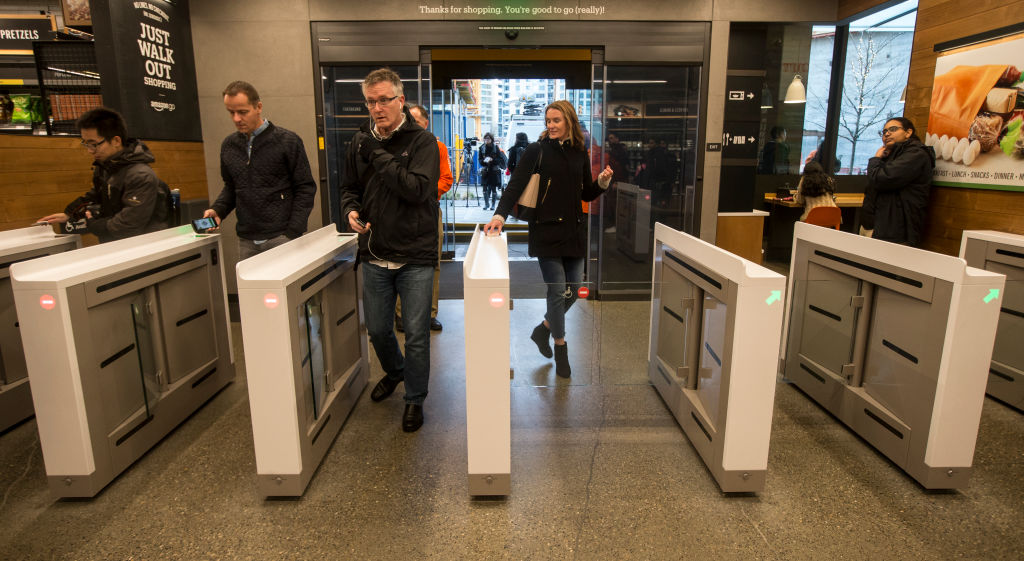Half of the year is already through and the retail goals and objectives that you set for 2019 now seem like old news. Also, a pandemic wasn’t in the picture when you must have made them! So much has changed.
However, there’s no better place than the halfway mark to evaluate how far you’ve come with your goals. This is also time to set some short-term goals you can achieve quickly.
With omnichannel retail and an increase in digital consumerism, your marketing efforts need to account for intense competition and changing consumers. You can only achieve this through data-driven marketing decisions. Plus, you also need a way to measure the results of these efforts to know where you stand.
To be sure, any goal involves consistent effort and results may not always be apparent immediately, but here are some aspects that you can get started with.
Retail Goals And Objectives For 2021
-
Increased Brand Awareness
With so many choices in terms of brands and products, how can you stand out to catch attention?
Creating a powerful and relatable brand story helps your customer connect at a deeper, personal level with your brand. This is a great way to establish awareness and recall.
Warby Parker’s retail story is one that a wide cross-section of customers can relate to as they want to bring affordability to designer eyewear- a common pain-point. Plus, they donate to a cause for every pair sold.
Unique?
Not so much. But different in an industry plagued by monopoly?
Definitely.
It takes anywhere between 5 to 7 impressions for a brand to get recognized or be remembered. Establishing brand equity goals should be an integral part of your retail goals and objectives for 2019. You can easily establish measures for brand awareness – for example, through market share, sales, etc. but you should pay close attention to measuring behavioral aspects such as brand loyalty, customer satisfaction, perceived product quality, engagement and so on.
Key Takeaway: Put yourself out there more of the time. Use any and all media through which you can connect to a potential customer. Tailor your communication to resonate with them.
-
Greater Brand Loyalty
Customer acquisition does not come cheap. It takes time, effort, and some cost to acquire new customers.
Approximately 27% of people who make an initial purchase show the potential to buy again. Loyal customers are a captive group to market to- they buy more often and open up their wallets more.
Brand loyalty is not limited only to repeat buying, but you can derive other positive wins as loyal customers turn brand ambassadors. You get more marketing mileage through their word-of-mouth testimonials, active referrals, live display of products purchased, and so on.
To gain brand loyalty, you need to gain the confidence and trust of customers. Of primary importance is your ability to provide top quality products as advertised and top-notch customer service. Offer value to draw customers back.
Zappos established a rewards program to draw in customers and backed it up with excellent customer service. Every time a customer engages with the brand, it seems like they get something of value.
Key Takeaway: Tailor your marketing efforts to promote brand evangelism from customers. Make it convenient for them to make referrals, share with friends, offer preferred treatment through rewards, and build your tribe through engaging ways.
-
Better Customer Engagement, And Experience
When you invest in customer engagement, you create chances to engage with your brand, your products, core values, and lots more. One way in which this can be done is for you to establish a strong presence on social media. Create a social media engagement calendar for the year so you are committed to being active more of the time.
You can identify and create a series of positive customer experiences across the customer journey. Consider brand marketing events, product discovery, reviews, at check-out, and beyond. These instances can be either online or in-store.
Red Bull is an outstanding example of a brand that creates a fantastic customer experience of living life to the fullest. Small brands like Ipsy, a subscription-based beauty retailer, have made acquiring customer data an enjoyable experience. The site presents them with a fun quiz based on which they send recommendations for beauty products to customers.
One of your goals for the rest of this year should be not only to incorporate positive customer experience but also ways to measure them to see if they are working for you.
Key Takeaway: A good customer experience can be built all along the customer journey. Think of which elements would make the most sense to your customers.
-
Building An Omnichannel Presence
If you aren’t an omnichannel retailer yet, there’s no better time than now to get started! A good omnichannel retail strategy can help you boost sales by offering the option of selling across as many avenues and channels as possible.
In order to get this right, you need sound preparation. An omnichannel inventory management system can help you consolidate and track inventory movement across all of your sales channels.
For example, if someone were to buy online from you and pick up from a store, an omnichannel system can pinpoint which stores already have that product in stock and whether in-store fulfillment is possible.
Plus, you can also market more effectively when you help consumers take the shortest route from consideration to conversion which you can achieve by tactically using brand touchpoints to create a seamless experience.
Why is omnichannel retail so important? Today’s retailers are catering to a generation of consumers who like the convenience of instant deliveries. The convenience of buying plays a major role in encouraging repeat purchases, and going omnichannel allows you greater flexibility in your business operations.
Key Takeaway: If you haven’t gone omnichannel yet, you’re losing out! An omnichannel retail experience can give your sales a big boost and allow you to enter the league of brands that put customer satisfaction front and center.
-
Social Media Marketing
It was only a matter of time, and now the Instagram shop feature is fully here. Smaller retailers no longer really need a dedicated store since they can now sell through the Instagram platform. Even if you use Instagram only for promotion, the means to do so are many. You can employ influencers to talk about your brand, and even use tools like HypeAuditor to see just how powerful they are.
Plus, Facebook earned an average of $6.2 from each user and the company exceeded all revenue expectations even as it faces a federal charge. This just goes to show how social media platforms have become an indispensable part of our lives, and that of our consumers. Ads, both original and retargeted, perform well on social media.
Key Takeaway: It is time to amp up your social media strategy. A lone post here and there just won’t do when brands are scrambling to keep their audience engaged. Develop a sound strategy for engagement, decide on your ad spend and see the sales rolling in!
Which of these goals would you pursue in the next six months? What roadblocks do you see along the way? Share with us in the comments below.
Request Demo
thank you
thank you
thank you
Request Demo
window.IS_INDIA = 0;window.USER_COUNTRY = 'China';window.USER_CITY = 'Hangzhou';window.USER_COUNTRY_ISO = 'CN';
Armed with a degree and a pen, loves to tell stories. When not telling stories, she also works. Hard to decide which one she likes more.
(function(d){var s=d.createElement('script');s.type='text/javascript';s.src='https://a.omappapi.com/app/js/api.min.js';s.async=true;s.dataset.campaign='cxecxy09nlvnnyvfiqjf';s.dataset.user='22867';d.getElementsByTagName('head')[0].appendChild(s);})(document);
,



